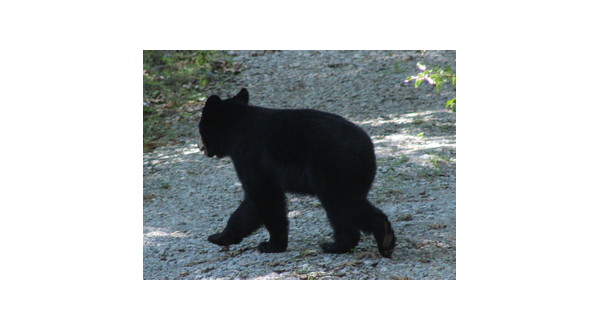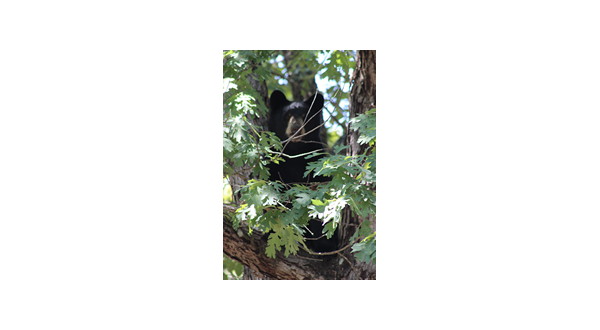

Bear sightings have been reported in numerous locations across Arkansas and Missouri throughout the summer months, with two Baxter County residents calling KTLO, Classic Hits and The Boot news after being surprised to see them near their homes.
Dianna Jowers lives along Havner Road in the Norfork area and reports a black bear was chased up a tree by one of her dogs. She says her husband spotted the bear after hearing one of her dogs barking.
Listen:
The Pacesetting Times in Horseshoe Bend reports black bear sightings have been reported since mid-May in Izard, Sharp, Fulton and Independence counties.
Trey Reid, a spokesman for the Arkansas Game and Fish Commission, told the Times weeks of temperatures in the 90s after cooler weather in early spring might have led to the animals most active periods happening over a shorter period of time.
Reid said the commission does not track bear sightings, but they usually leave their dens in the spring. With social media, more sightings are recorded. Reid says its not necessarily happening more, it’s just Game and Fish know about more of it.
The American black bear, the only species of bear in Arkansas, carries a powerful Natural State attraction for wildlife watchers and photographers, many of whom consider bears to be the most significant symbol of the vanishing American wilderness.
Formerly one of North Americas most widely occurring mammals, the American black bear was so common in Arkansas at the time of pioneer settlement the states original nickname was The Bear State. Now bears are absent from much of the continents interior, while the population of Arkansas bears is recovering from decline.
The current population of Arkansas bears is estimated at more than 3,000. They usually appear taller at the hips than at the shoulders and can reach over six feet tall when standing erect. Male black bears are known to exceed 600 pounds. In Arkansas, adult males typically range from 130 to 300 pounds and adult females from 90 to 150 pounds. Their weights vary considerably within a single year and even between years, depending on food abundance.
Black bears in the wild prefer feeding in early morning and late evening, but are active at night. Insects are a mainstay of their diet, which also includes blackberries, pokeberries and blueberries in the summer and acorns and hickory nuts in autumn.
American black bears occur in a variety of colors ranging from black to almost white. The black color phase is virtually the only one found in the eastern United States. Black bears may occasionally have a white patch or blaze on the chest. Brown and cinnamon-colored black bears become increasingly common in the more variable, drier and mountainous habitats in the western United States.
An interesting exception to this rule occurs in Arkansas. Approximately 23 percent of bears in the Ozark Mountains and three percent of bears in the Ouachita Mountains are brown or cinnamon-colored. Cinnamon and brown-colored black bears are fairly common in these areas.
According to Reid, bears can smell food up to a mile away. He advises people not to leave trash or dog food out and of course if you see a bear call authorities.
In Missouri, state conservation officials reported in July six black bears have died after being hit by vehicles this year.
Missouri Department of Conservation biologist Laura Conless says the number of deaths is higher than last year but is not an unusually high number.
Conlee said Missouri’s bear population is growing, and that could be contributing to the number of bear-vehicle collisions. She says bears also are more active because it’s breeding season and spring and summer weather has reduced their food supply.
WebReadyTM Powered by WireReady® NSI










